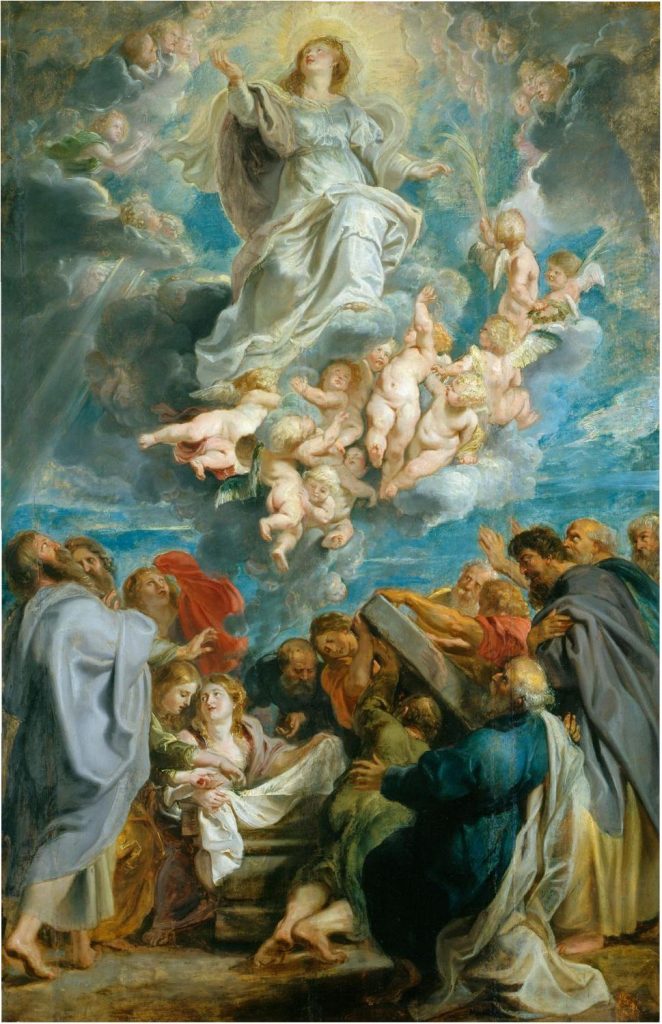Rev. 11:19; 12:1–6, 10 / Ps. 45:10–12, 16 / 1 Cor. 15:20–26 / Lk. 1:39–56
The liturgy for today’s solemnity forms a beautiful litany to the mystery of Mary’s role in salvation history.
Mary is the new Ark of the Covenant, the new dwelling for God’s glory on earth (see Exodus 40:35; Luke 1:35). Her setting out for the hill country of Judah in today’s Gospel deliberately evokes the historic moment when the newly anointed King David returned the Ark to Jerusalem (see 2 Samuel 5–6).
She is the “Mother of the Lord” before whom the prophet John leaps and Elizabeth exults, as David danced and exulted before the “Ark of the Lord” (see 2 Samuel 6:9,16; 1 Chronicles 15:28).
The prophet Jeremiah hid the Ark before the fall of Jerusalem and the final collapse of David’s kingdom. It was to be restored only when God came to gather his people together again and show them mercy (see 2 Maccabees 2:1–8).
In Mary, this promised is fulfilled, as John sees in his vision of the heavenly temple in today’s First Reading. She is the Ark and the Daughter Zion, the mother foretold, who would bear the Anointed, destined to rule all the nations (see Psalm 2:9; Isaiah 66:7–14; 26:17).
Assuming the place prepared for her by God at the right hand of her Son, Mary is the Queen Mother of Heaven (see 1 Kings 2:29–20; Jeremiah 13:18). As we sing in today’s Psalm, her King is her Lord and she worships him.
Mary is the New Eve, today’s Epistle reveals — the woman whose offspring God promised to crush the ancient serpent and reverse Adam’s sin (see Genesis 3:15; Revelation 12:9).
The blessed fruit of her womb has put the final enemy under his foot (see Psalm 8:7; 110:1), becoming “the first fruits of those who have fallen asleep.”
Caught up to God and his throne, he has taken his mother to himself as a sign of our hope — that we too “in Christ shall be brought to life.”

